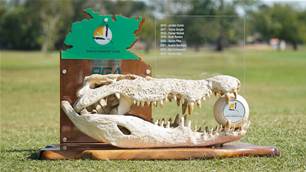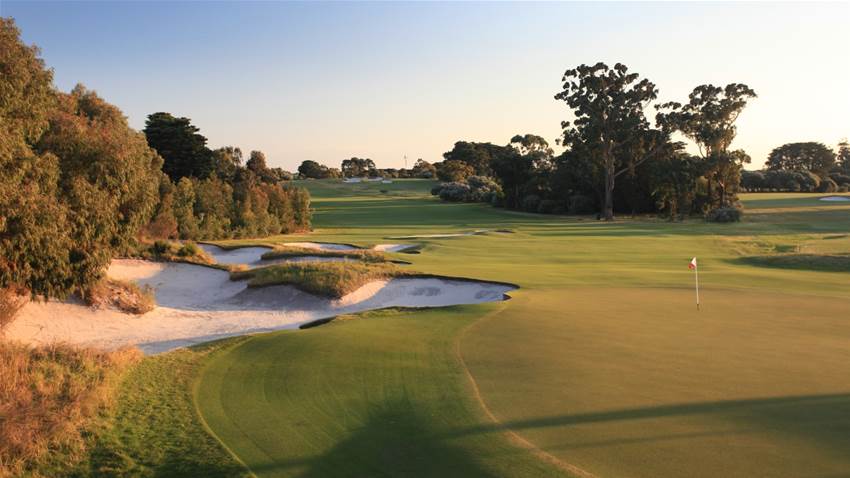The most significant thing to happen to Australian golf was not Adam Scott winning The Masters. Nor was it Peter Thomson winning five Opens in Britain or Greg Norman carrying the Australian Tour in the 1980s and 1990s.
Players inevitably come and go, and the best ones do leave significant marks on the local game. But unquestionably the most significant months in Australian golf history were the three leading up to Christmas of 1926 when Alister MacKenzie sailed here to redesign Royal Melbourne’s West Course.
Until then, if world-class architecture was the measure, Australia’s golf courses had been rudimentary. But 1926 was the midst of The Golden Age of golf design and great architects across the world were showing golfers how much better the game could be when courses emphasised brilliant routings, interesting strategy and beautiful, natural construction.
Equally unquestioned is that better architecture was an important part of popularising the game especially as a key principle of the Golden Age courses emphasised strategic golf, a move away from early courses – mainly designed by golf pros – where an emphasis was to punish the poorest shots of the poorest players.
On the banks of Melbourne’s Yarra River, under what is now the Bolte Bridge, was Victoria Golf Club’s original course. The men who formed Royal Melbourne and five years later, Metropolitan, shared a course in suburban Malvern. Kingston Heath was in Elsternwick and Commonwealth in Murrumbeena. Yarra Yarra was in the far north of the city in Rosanna. Of the best Sandbelt courses only Woodlands remains on its original site.
No one has ever suggested these lost courses were of any great note. They likely encapsulated courses MacKenzie would have described as simply places to sock a ball around.

Just as C.B Macdonald showed Americans the possibilities of golf architecture when he built the first great course in the United States at the National Golf Links of America, MacKenzie showed Australians what great golf looked like when he designed Royal Melbourne. Mick Morcom’s (the club’s greenkeeper) construction of the bunkers and greens was world-class.
Not only was the routing of the holes and the use of the land close to flawless but there isn’t a green, a bunker, a tee anyone would recommend moving to improve the golf.
The rest of the Sandbelt formed around the strategic and visual principles of Royal Melbourne and despite custodians occasionally, and probably inevitably, making some poor architectural decisions in the decades after the Second World War, it remains, with the courses of New York, London and Philadelphia, one of the four most significant collections of golf architecture in the world.
MacKenzie’s influence spread north to Sydney and the original great courses of The Australian Golf Club, Royal Sydney and New South Wales. It also went to Royal Adelaide although member criticism, including vitriolic letters to the newspapers, stopped the completion of his complete plan which included a short par-4 from the 10th tee to what is now the 11th green. Still, his short par-4 3rd remains one of the great little holes in the country.
Royal Queensland enjoyed some of his time although none of the course remains except for a variation on the theme of his short par-3 8th (now the 17th) hole. There are, however, principles he encouraged on full display on the new course. Width makes shots from one side of the fairway wildly different from shots from the other side. To remind of St Andrews, hazards are often on a direct line to the hole and, as Harry Colt would have said, the trees are part of the scenery but not part of the stage. Colt’s dictum is not embraced, or understood, by all and it’s to the detriment of so many courses around the country.

MacKenzie understood the Old Course where trees obviously play no part in the golf and he largely kept them away from the play at Cypress Point, Augusta National, Crystal Downs and Royal Melbourne.
RIGHT: From one visit nearly a century ago, Dr Alster MacKenzie is still an influence on our best golf. PHOTO: Supplied.
These Australian committees who moved their clubs made what were bold decisions for their time. Not everyone owned cars but of the Sandbelt courses only Kingston Heath was some way from a train station and those content with rudimentary golf were perhaps unhappy at the prospect of moving to new fields further away.
But, as MacKenzie wrote in The Spirit of St Andrews: “It is a remarkable thing about golf courses that nearly every man has an affection for the particular mud-heap on which he plays. It is probably, largely due to his associations: his friends play there; he knows the course and can probably do a lower score than elsewhere. It may not be a real course at all. There may be no interest or strategy about it; it simply gives him an opportunity for exercise and ‘socking’ a golf ball.”
These bold choices and the spirit of adventure, both so evident and necessary in all parts of early Australian life, transformed golf in Victoria and, to a lesser extent, other parts of the country.
There remains, however, an awful lot of very rudimentary golf in our capital cities and country towns.
Golfers with “affection for their particular mud-heap” are much less likely to move now than they were a century ago. Of course, it’s more difficult and suitable land is both much less affordable and available. There is an important place for rudimentary golf but just as important is advancing architecture and making courses inspiring for players to take up, and continue, the game.
Some courses have moved as developers offered irresistible amounts for their land.

My first club at Eastern sold up and hired Greg Norman to build a new course half an hour’s drive away. Croydon, with much less money did the same with Ross Watson at Yering Meadows, while Kingswood merged with Peninsula and dramatically improved the golf the members from both clubs were playing. Graham Marsh built a new course for Horton Park members at close by Maroochy River.
If we can agree, without too much upset, there are still many courses best described as places for “exercise and socking a golf ball”, then the question is what do we do from here and what does golf course architecture in Australia look like a century from now?
Royal Sydney, with a collective mix of wisdom and bravery, are about to completely rebuild their golf course. It’s not a bad course by any stretch, if the measure is the standard of the average of the 1500 or so courses dotted around this enormous country.
Relative to its potential, however, golf at Royal Sydney is akin to the smartest kid in the class getting 65 percent in an exam. Huntingdale gets even fewer marks in its current state, but the upcoming redesign of the course promises something much better.
Royal Sydney’s committee could easily have left well enough alone, content with playing decent golf but instead they are embarking on one of the most dramatic redesigns in the history of Australian golf. There is no doubt the new routing is a wildly better use of the land, and the members won’t know themselves once they get back to playing in 2025.
Nor was Victoria a bad course in 1995 but it’s much better now because Ian Meckiff and his committee took the bold decision to restore the course to something resembling the layout in the early 1930s. Left alone in its 1995 state it would barely lay claim to being a top-20 course in the country a quarter of a century later. Nor would the 1930 course have been outside the current top dozen.
Individually Richard Sattler at Barnbougle and Mat Goggin at Seven Mile Beach invested in better golf and, like the Sandbelt clubs, made courses on ideal land for golf.
It’s public golf but a century from now golfers will marvel at the boldness of their decisions and how those choices left the Australian game much better off. And, despite the runaway success of Barnbougle, it’s worth remembering that almost no one thought it was a good idea to build golf in Bridport, Tasmania. Most people I spoke to thought it was a terrible idea.

The importance of Richard Sattler is that for the first time every Australian golfer could play a World Top-100 course, something Americans and Brits had always taken for granted at St Andrews, Carnoustie, Pinehurst, Pebble Beach and much later at Bandon in Oregon and Sand Valley in Wisconsin.
The future of golf course architecture and better golf courses in Australia is always going to be dependent on men and women making bold choices in the same spirit of adventure The Melbourne Golf Club members showed in 1913.
Do clubs, committees and governments think 50 and 100 years ahead and contemplate what courses are going to look like?
It’s perhaps an especially relevant question in the country where clubs as a rule formed close to the towns on land less than ideal but nonetheless very convenient. In Victoria, Horsham, Trafalgar and Leongatha all found land further than was ideal, in terms of easy access, to make better golf. Port Fairy moved from a rudimentary to a brilliant site in the dunes outside of town and now it’s the best course so far from a capital city in the country.
The top end of Australian courses is unquestionably both world-class and noticeably better than it was in 1980 but the United States and England are ahead of us.
Of course, both are hugely advantaged by population (and seemingly unlimited amounts of money in America) but it’s all too easy being content playing courses where socking the ball is the entertainment when the opportunity is there to make better golf whether it be a new course or improving an older one.
Related Articles

Course Review: Curlewis GC

Course Review: St Andrews Beach













